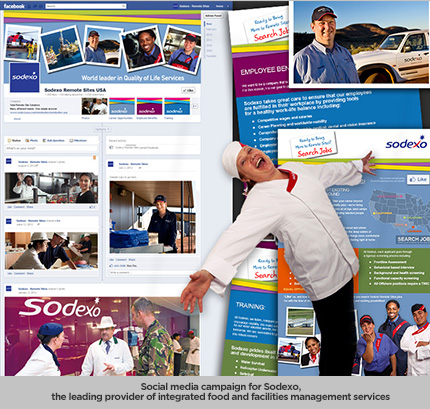Business Guide to Marketing
Business Guide to Marketing
To be successful, you need to take advantage of all of the marketing channels available. Marketing your business can seem like a challenging task. What works for one business may or may not work for another. First step, you just need to set up your goals and set up a strategic plan to accomplish them. Whether it’s marketing online or offline, digitally or traditionally, be sure to be personal and authentic in all your communication with your target audience and stay true to your brand image, voice and personality. There’re so many ways to better engage your audience and achieve better marketing success but always be consistent with your message.

Optimize Your Online & Digital Marketing
Website: Your business website needs to be attractive, serves your business and your customers, user-friendly and optimized for search engines. An SEO friendly site means that all pages should include relevant and unique META Tags (title, description and keywords) and strong unique content. Your website should represent your company’s image and provide valuable resources for your potential customers, business partners and investors. Be sure to promote your site online in local business directories, on Google Places for Business, Yahoo! Local, and Bing Local Listing Center.
Email Marketing: Email marketing is a popular form of online marketing. It offers one of the best return for your investment. Plenty of email blast tools are available to allow just about anyone to be able to successfully run email marketing campaign and broadcast a rich-media HTML email to anyone on your targeted opt-in list. Among the popular email marketing tools are Constant Contact, MailChimp, StreamSend and VerticalResponse. Those email marketing tools provide you with intuitive analytics to track your past email campaign performance (click-through rate, open and unopened emails, unsubscribers and etc.,) and to gauge the success rate so you can make any necessary adjustments in the future campaign. They also let you manage and grow your subscriber list over time. You can regularly send out a newsletter to announce an upcoming product, promotions or simply survey your customers.
Social Media Marketing: Social media is arguably the most powerful aspect of online marketing. People by nature desire to connect, share thoughts, ideas, and information. Sometimes half the battle for business success is exposure. You can also use of social media to connect with your customers to give them instant feedback and quickly respond to any of their questions and/or concerns.

Social media allows you to establish a two way communication channel as well as keeping on-going dialogue with your target audience. Remember, the conversation is already happening in social media. Businesses can’t afford to be left out. Some examples of social media channels and applications include Facebook, Twitter, Google+, YouTube, Digg, Instagram, Pinterest as well as blogs. Here’re some of the main goals and objectives of social media marketing:
- Build relationships and brand awareness
- Create online outlet channels for the brand
- Reduce customer support and acquisition costs
- Grow online community, loyal fans and followers
- Brand advocate and word-of-mouth marketing
Promotion & Giveaways: People love to win prizes! Make sure what is being given away is a conversation starter, something that people want to tell their friends and share with others about. Use Facebook ads to further promote your upcoming contest or survey or Twitter to spread the words. You can also launch a micro-site or a landing page and run pay-per-click (PPC) ads to targeted demographics to ensure your message is reaching the right people.
Know Your Market and Monitor Your Competition: Constantly measure and analyze marketing performance to maximize its effectiveness and optimize return on investment (ROI). Understanding the results and key performance allows you to be more efficient and minimize wasted expenses. Use robust web analytic tools such as Google Analytics or Bing Webmaster Tools to track and monitor traffic coming to your site so you can determine how your website is performing. There’re also plenty SEO tools to allow you to monitor your competition and make adjustment to your online marketing strategy on an on-going basis.
Traditional Marketing and Public Relation (PR)
Lastly, don’t ignore the traditional marketing and PR. No single marketing effort works 100% of the time for everybody. So, try many different strategies and tactics and see which one would work best for you. Be sure to have intelligent analytic tools in place to measure the campaign results and impact. Traditional marketing include:
- Direct Mail
- Print Advertisements in Trade Magazines
- Tradeshow and Event Marketing
- TV and Radio Ads
Click here to learn more about how we can help maximize your marketing efforts.
James Faulkner is SodaPop Media’s Content Manager and Creative Director.





